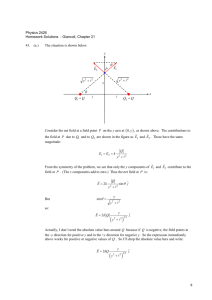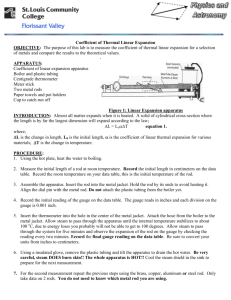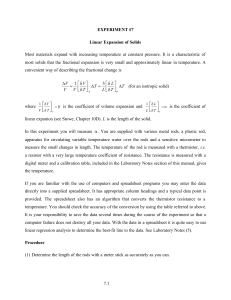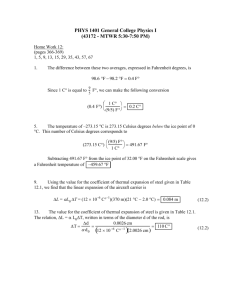Thermal Expansion
advertisement
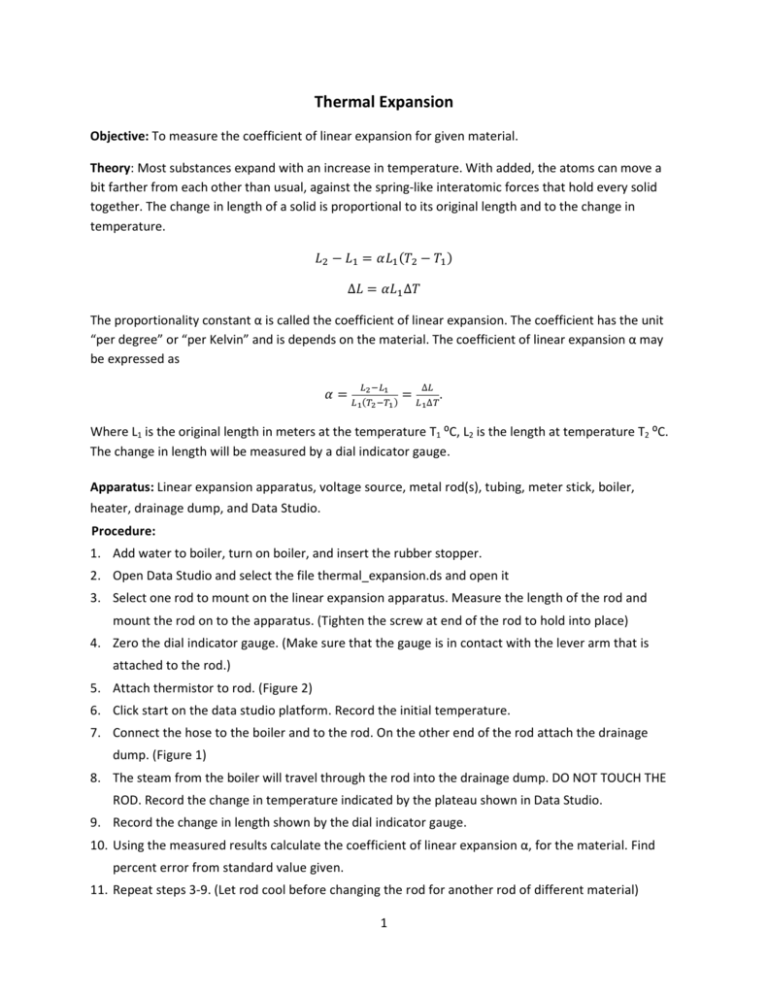
Thermal Expansion Objective: To measure the coefficient of linear expansion for given material. Theory: Most substances expand with an increase in temperature. With added, the atoms can move a bit farther from each other than usual, against the spring-like interatomic forces that hold every solid together. The change in length of a solid is proportional to its original length and to the change in temperature. ∆ ∆ The proportionality constant α is called the coefficient of linear expansion. The coefficient has the unit “per degree” or “per Kelvin” and is depends on the material. The coefficient of linear expansion α may be expressed as ∆ . ∆ Where L1 is the original length in meters at the temperature T1 ⁰C, L2 is the length at temperature T2 ⁰C. The change in length will be measured by a dial indicator gauge. Apparatus: Linear expansion apparatus, voltage source, metal rod(s), tubing, meter stick, boiler, heater, drainage dump, and Data Studio. Procedure: 1. Add water to boiler, turn on boiler, and insert the rubber stopper. 2. Open Data Studio and select the file thermal_expansion.ds and open it 3. Select one rod to mount on the linear expansion apparatus. Measure the length of the rod and mount the rod on to the apparatus. (Tighten the screw at end of the rod to hold into place) 4. Zero the dial indicator gauge. (Make sure that the gauge is in contact with the lever arm that is attached to the rod.) 5. Attach thermistor to rod. (Figure 2) 6. Click start on the data studio platform. Record the initial temperature. 7. Connect the hose to the boiler and to the rod. On the other end of the rod attach the drainage dump. (Figure 1) 8. The steam from the boiler will travel through the rod into the drainage dump. DO NOT TOUCH THE ROD. Record the change in temperature indicated by the plateau shown in Data Studio. 9. Record the change in length shown by the dial indicator gauge. 10. Using the measured results calculate the coefficient of linear expansion α, for the material. Find percent error from standard value given. 11. Repeat steps 3-9. (Let rod cool before changing the rod for another rod of different material) 1 12. Dismantle the equipment and dry the rod, tube and tubing. Material -1 α (( ⁰C) ) Brass 19 10 Copper 17 10 Figure 1 Steel 11 10 Aluminum 23 10 Figure 2 Figure 3 2



